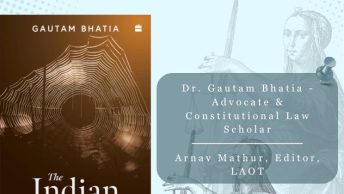Blurb: This article maps the four statutory criteria central to the sex-consent matrix, which render consent peripheral while elevating social control and sexual obligation. Thereafter, it reads the emerging line of Supreme Court authority as a doctrinal resource that destabilises the matrix and re-centres the individual as the locus of choice. By weaving doctrinal analysis with socio-legal insights, the article aims to move the conversation on marital reform beyond piecemeal fixes toward a comprehensive re-imagining of consent in Indian family law.
Introduction
Indian marriage law has sometimes been narrated as a story of social progress: the Hindu Marriage Act, 1955 (“HMA”) ended rigid caste barriers, the Special Marriage Act, 1954 (“SMA”) offered a secular alternative to personal-law regimes, and a steady trickle of judicial decisions has supplied modern glosses on relationship autonomy. Yet a closer reading of the statutory text reveals a deeper, less explored paradox: while marriage is presumed to sanctify sexual relations, neither the HMA nor the SMA treats the parties’ explicit, ongoing consent—to marry or to have sex—as legally central. The legal contours of these statutes discipline intimate life by authorising community oversight, normalising sexual access within marriage, and erasing meaningful choice. I have not analysed other personal laws in this piece, although I believe this analysis is applicable to those statutes as well.
However, over the last decade, a counter-current has gathered force in constitutional jurisprudence. Decisions such as Shafin Jahan, Puttaswamy, Navtej Johar, Joseph Shine, and Independent Thought articulate autonomy, privacy, and dignity as indivisible rights that travel with every individual into the marital sphere. These cases allow the possibility of making inroads into challenging the sex-consent matrix in marital law.
This article is structured as follows: Part I maps the four statutory criteria central to the sex-consent matrix. These criteria render consent peripheral while elevating social control and sexual obligation. Part II reads the emerging line of Supreme Court authority as a doctrinal resource that destabilises the matrix and re-centres the individual as the locus of choice. A short conclusion follows.
By weaving doctrinal analysis with socio-legal insights, the article aims to move the conversation on marital reform beyond piecemeal fixes toward a comprehensive re-imagining of consent in Indian family law.
The Sex-Consent matrix in marriage law
I will sketch out four criteria relating to the conceptual intersection of sex and consent in the HMA and the SMA, and demonstrate how they reify marriage as discipline through governance. I call this the ‘sex-consent’ matrix. I have chosen the categories of sex and consent, as they form the fundamental basis of sexual citizenship.
First, there is no explicit requirement of consent for two people to get married under the HMA or the SMA. The HMA and SMA have identical provisions containing an extremely medicalised version of consent for the validity of marriage between two persons. In case a party has unsoundness of mind, mental disorders, or insanity, the marriage is voidable under the HMA and void under the SMA. Further, if the consent of the petitioner was obtained by fraud or force/coercion (which may have high thresholds of proof), the marriage is voidable. This leads to the strange conclusion that there is no requirement of explicit consent to the marriage under these laws. The concept of arranged marriages in India, across castes and religions, treats marriage as an obligation of both the parents as well as their children. While the threshold of fraud or coercion may not be met in many marriages, the way consent is manufactured or forcefully obtained from many people must be recognised. There should be a legal avenue to verify or challenge the same.
Second, there is a bizarre requirement of consent in rem under the SMA. Any couple that intends to solemnise a marriage under the SMA has to give notice to the Marriage Officer of the district, who shall put it up in a conspicuous place. The Marriage Officer shall conduct an inquiry into the marriage if anyone raises an objection to the marriage. Perveez Mody records how the names, photographs, and addresses of the parties are pasted in the corridor outside the Marriage Officer’s room, and a copy of the notice is sent to the parties’ residential addresses (often the parents’ addresses). The notice requirement legitimises consent from the families and communities for the marriage of majors. It enables these actors to track down those who wish to have a ‘love marriage’. This violates the decisional and sexual autonomy of those wishing to get married, and can expose them to violence.
Third, the law provides for restitution of conjugal rights between spouses. The Court can legally mandate a person to join their spouse, resuming not just cohabitation but conjugal rights as well. The constitutionality of this provision was upheld by the Supreme Court in Saroj Rani v Sudarshan Kumar Chadha, to fulfil the social purpose of preventing breakdown of marriages. The Court reiterated the safeguards, which allow the retreating spouse to justify their withdrawal from conjugal relations based on a ‘reasonable excuse’. Given the absence of a comprehensive conception of no-fault divorce in India, the lack of consent, or sexual desire, or incompatibility may not be accepted as a ‘reasonable excuse’. The dictum of ‘restitution’ problematically denotes an entitlement to sex in the first place. Although this provision is worded in a gender-neutral manner, it has grave ramifications for women as it undermines their sexual autonomy and treats them as their husbands’ chattel.
Fourth, sex between spouses is a central feature of marriage. The HMA provides for the marriage to be annulled if the respondent is impotent and therefore the parties have not been able to consummate the marriage. The SMA is even more direct as it allows the annulment of a marriage if the respondent wilfully refuses to consummate. A spouse has no space to negotiate sex within a marriage. There is an expectation, social obligation, and familial pressure on spouses to consummate the marriage, for women to get pregnant, and to fulfil their husbands’ sexual desires/needs. The SMA and HMA affix a stamp of legal approval for this expectation.
From these four instances, I submit that the legal and societal understandings of marriage conventionally ignore, dismiss, and make irrelevant the informed consent of individuals to a marriage as well as sex within marriage. The matrix of these legal provisions may hinder the exercise of consent in as free a manner as may truly be possible. There are two aspects of sexual citizenship that are fleshed out and reified through these provisions: First, there is a focus on the patriarchal governance of marriage through family and community, which ensures that sexual relationships are primarily based on the consolidation of caste, class, and religion. Second, there is an excessive focus on the sexual, as well as the heterosexual, as an obligation to one’s spouse and presumably in furtherance of the goal of reproduction.
The culmination of this sex-consent matrix can be seen in the egregious Marital Rape Exception (‘MRE’) that continues to persist. It is a prime example of the way women’s consent is violated within marriages, when they are raped by their husbands, and this violation is essentially deemed a non-violation within the crime of rape. Family law thus has a direct link with criminal law in continuing this assumption of negating sexual autonomy within marriage.
Reading Resistance: Legal Jurisprudence
There is one strand of reasoning in the (albeit plurivocal) Courts in the last ten years which had tried to move away from the sex-consent matrix in family law. The Supreme Court, in Shakti Vahini v Union of India and Shafin Jahan v Asokan KM, reaffirmed the right of major individuals to love and marry partners of their choice, even if they transgressed caste and religion-based proscriptions enforced by their families and communities. In Puttaswamy v Union of India and Navtej Singh Johar v. Union of India, the Court explicitly held that rights of autonomy, dignity, and privacy intrinsically inhere in individuals, and allow them to make their own choices in intimate and personal matters. In Joseph Shine v Union of India, the Court expressly engaged with the question of women as chattel of their husbands. The Court held that there cannot be a patriarchal monarchy over wives or daughters, and a man’s ‘marital entitlement’ to the exclusive sexual possession of his wife cannot be recognised today. The Court declared that marriage in a constitutional regime is founded on equality between spouses, and that the sharing of physical intimacies is a reflection of choice. In Independent Thought v Union of India, the Court held that a married woman or a girl child is not subordinate to the husband or required to be at his beck and call as his property. The Court re-emphasised the right to bodily integrity and reproductive choice, albeit restricting the analysis to girl children as that was the issue in question. In Shilpa Sailesh v Varun Sreenivasan, the Court held that it could grant mutual consent divorces under S.13B of the Hindu Marriage Act, when it ascertained that the continuation of the marital relationship was an impossibility.
The language of choice, autonomy, and dignity is being employed in service of strengthening the value of consent within marital law. This ties back to the argument that marriage is a dynamic institution, which evolves with the times and adapts to new forms of relationships, albeit slowly. The normative leading the legal is not a new trope. The formulation of the Hindu Code Bill, the passage of the Hindu Marriage Act in 1955 allowing for inter-caste marriages without renouncing religion or facing excommunication, and the Section 7A amendment in 1967 to the HMA in Tamil Nadu which provided for anti-Brahmanical self-respect marriages are all instances of how social change and legal change are intertwined.
However, a slight sore spot in this jurisprudence that cannot be missed is Supriyo v Union of India. In Supriyo, all opinions of the Court affirmed that queer persons possess an equal right to choose partners, co-habit and ‘enjoy physical intimacy’ grounded in privacy, autonomy and dignity; however, the Court redirected the question of same-sex marriage to Parliament. Unfortunately, the Parliament continues to evidence no intention of modifying marriage law to make it queer-inclusive.
Some of the recent Supreme Court-led jurisprudence thus provides the legal vocabulary of autonomy, privacy, and dignity to challenge the consent-sex matrix, and by extension, the current idea of sexual citizenship. The restitution of conjugal rights was again challenged in the Supreme Court by way of a petition in 2019, and the challenge to the marital rape exception was referred to a three judge bench of the Supreme Court. The burgeoning jurisprudence on sexual autonomy, the right to choose a partner (for both heterosexual as well as queer persons), and the right to be free from state and societal interference confirms that the idea of marriage in the law is morphing and transforming, albeit extremely slowly.
Conclusion
While the HMA and SMA continue to subordinate meaningful consent to social control, the Supreme Court’s recent autonomy-centred case-law shows the ground is shifting. The task ahead is therefore twofold: First, to translate the Court’s autonomy-centred vocabulary into concrete legislative reform by including an explicit requirement of consent to marry, scrapping the notice requirement in SMA, abolishing restitution of conjugal rights and rethinking grounds relating to non-consummation and impotency and their relation to annulling or voiding marriages. A logical extension of this move is to remove the marital rape exception as well. Second, the ambit of marriage must be widened. Marriage must be opened up, to non-heterosexual intimacies, thus reorienting its focus from reproduction to the recognition of relationships. Only by re-inscribing explicit, continuous consent into the legal architecture of marriage and extricating family law from the chokeholds of prescribed sexual relations can Indian law fulfil its promise of sexual citizenship for all.
Jwalika Balaji is a Research Fellow at the Vidhi Centre for Legal Policy, Delhi. She holds a Bachelor of Civil Law (LLM-equivalent) degree from the University of Oxford and a B.A., LL.B. (Hons.) from the National Law School of India University, Bangalore. Her areas of interest include family law, equality and anti-discrimination law, and human rights, with a special emphasis on gender and sexuality.
Ed Note: This piece was edited by Aditi Bhojnagarwala and published by Abhishek Sanjay from the Student Editorial Team.







What an engaging read! You kept me hooked from start to finish.
This was easy to follow, even for someone new like me.
This topic really needed to be talked about. Thank you.
This was incredibly useful and well written.
Somebody essentially help to make significantly articles Id state This is the first time I frequented your web page and up to now I surprised with the research you made to make this actual post incredible Fantastic job
Hi i think that i saw you visited my web site thus i came to Return the favore Im attempting to find things to enhance my siteI suppose its ok to use a few of your ideas
Your blog is a treasure trove of valuable insights and thought-provoking commentary. Your dedication to your craft is evident in every word you write. Keep up the fantastic work!
Your blog is a treasure trove of valuable insights and thought-provoking commentary. Your dedication to your craft is evident in every word you write. Keep up the fantastic work!
Your blog is a testament to your dedication to your craft. Your commitment to excellence is evident in every aspect of your writing. Thank you for being such a positive influence in the online community.
Thank you I have just been searching for information approximately this topic for a while and yours is the best I have found out so far However what in regards to the bottom line Are you certain concerning the supply
I’ve been following your blog for quite some time now, and I’m continually impressed by the quality of your content. Your ability to blend information with entertainment is truly commendable.
İstanbul, Türkiye’nin ekonomik ve ticari merkezi olarak, hem bireylerin hem de şirketlerin vergi yükümlülüklerinin oldukça yoğun olduğu bir şehirdir. Vergi mevzuatındaki karmaşık düzenlemeler ve sık sık yapılan değişiklikler, mükelleflerin zaman zaman hukuki desteğe ihtiyaç duymasına yol açmaktadır. İstanbul vergi avukatları, hem gerçek hem tüzel kişilere, vergi uyuşmazlıklarında profesyonel danışmanlık ve temsil hizmeti sunarak, olası cezaların ve kayıpların önüne geçilmesine yardımcı olur.